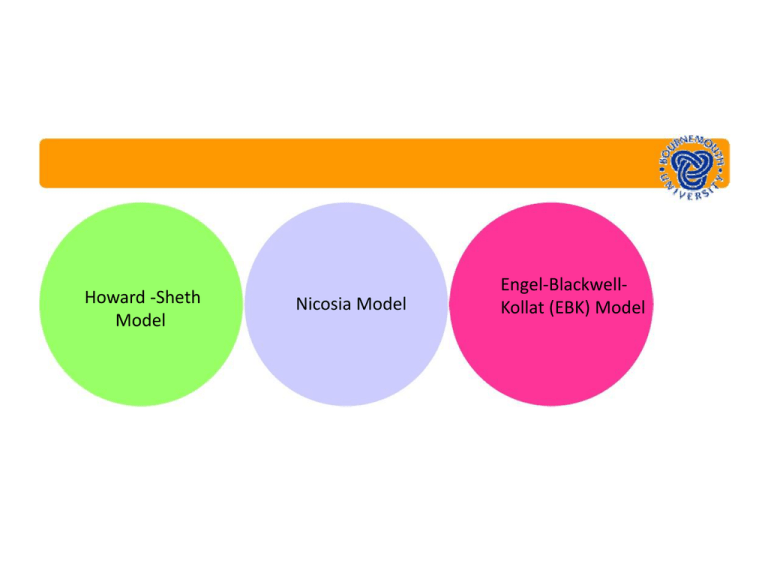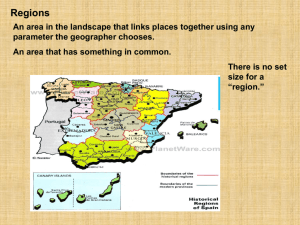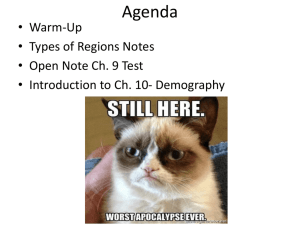hs-n-ebkipm
advertisement

Howard -Sheth Model Nicosia Model Engel-BlackwellKollat (EBK) Model HOWARD SHETH MODEL Inputs: These are the variables like the stimuli towards the products like the physical attributes, visual or verbal attributes, information served by the social environment and the family, reference groups and the social class. Perceptual and Learning Constructs: These are the psychological variables and are treated simply as the ideas like the fact that perceptual ambiguity; if customers are sure about the meaning of information gained from the environment or perceptual bias; if the customer distorts the information given to him according to his needs and wants and the learning constructs include the goals of the customer in the information and the criteria in evaluations and the intentions to buy. Outputs: This includes the final act of purchase like the attention, brand comprehension, attitudes, intentions and finally the act of purchase. External variables: These are the relevant external which includes the importance of the purchase, consumer personality traits, time pressure and the availability of the funds. NICOSEA MODEL Francesco Nicosia was one of the first to develop a Consumer Behavior model and shift the act of purchase to a more complex model. He represented a model in a flow chart format resembling steps in a computer program. This model is representing a situation where a firm is designing a communication (products, ads etc.) to be delivered to the consumers and in turn the consumers responses influence subsequent actions of the firm. The model shows the following; FIELD 1:- Attributes / Psychological Attributes, Outputs FIELD 2:- The consumer’s search for the evaluation, firm’s output and other available alternatives FIELD 3:-Consumer’s motivated act of Purchase FIELD 4:- The consumer’s storage or the use of the product These all have been assuming that there are no predispositions of the consumer with the company. In field2 the consumer will get motivated to gain information searching internal memory for the information or externally that the customer visits the stores whereas in the field 3 the firm receives a feedback. Field 4 is the experience and that may change from time to time. EKB MODEL The EKB (Engel, Blackwell, Kolat Model) of the consumer Behavior was originally developed in the 1968 serves as the framework for organizing the fast growing body of the knowledge concerning consumer behavior. >> Information Input: These are what the marketers and non marketers feed in the consumers for the information processing may also be called as the Problem Recognition Stage. >> Information Processing: This stage includes the exposure, attention, comprehension, acceptance and retention and the final processing to the long term memory >> Decision Process Stage: This is the difference between the ideal desired state and the actual state of the affairs, for what they believe shall be the right thing to buy for them >> Variable Influencing the Decision Process: These include the individual differences that include the motives, values , lifestyle, personality, attitudes and the environmental influences are the culture, social class, family and the reference groups. Situational variables like the consumer’s financial condition may also influence the decision making process. Thank you!!!











